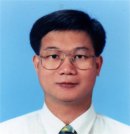|
Plenary
Lecture
An Efficient and Precise Numerical-Time-Integration
Scheme for Dynamic Analysis

Associate Professor J. D. Yau
Department of Architecture, Tamkang University
Taipei, Taiwan 10620
E-mail:
jdyau@mail.tku.edu.tw
Abstract:
In this paper, an efficient and accurate step-by-step
time integration algorithm with unconditional stability
for dynamic analysis is presented. For a dynamic system
under impulsive loadings with load discontinuities, a
very small time step is usually required to provide
acceptable levels of accuracy in performing time history
analysis. To improve this drawback in time integration,
the principle of momentum is available to integrate an
impulsive loading with respect to time so that the load
discontinuity in a time interval can be smoothed out
through another expression of external momentum.
Besides, time finite element methods feature a larger
time step to represent a continuous response over a time
step as two nodal responses of the time step. Combining
both computational advantages described above, this
study presents an improved time integration scheme with
the properties of larger time step size and accuracy.
From theoretical analysis of stability and accuracy, the
proposed algorithm possesses the efficient features of
unconditional stability, accuracy, and fast convergence
in numerical computation. For simplicity of
demonstration, a closed form solution of an excited
single-degree-of-freedom (SDOF) system is employed to
verify the feasibility and reliability of the new time
integration algorithm, with which the numerical results
obtained from the Newmark method are compared.
Brief Biography of the Speaker:
Studies:
Ph.D. in Civil Engineering, National Taiwan University
Academic Positions:
Associate professor of Tamkang University in Taiwan
Scientific Activities:
1. Vibrations of high speed rails
2. Geometrical nonlinear analysis of framed structres
3. Structural stability of tapered beams
Dr. Yau is currently an associate professor at Tamkang
University in Taiwan. He received his M.S. degree and
Ph.D. in civil engineering from National Taiwan
University in 1986 and 1996, respectively. His main area
of research is on the dynamics of vehicle-bridge
interaction with emphasis on high speed railway system,
including train-induced resonance phenomenon of bridge
response, assessment of running safety and ride quality
of traveling vehicles, and influence of ground
settlement on a train running over a series of bridge
units. He has published over 50 journal papers and
articles, and is also the second author of the book:
Vehicle-Bridge Interaction Dynamics. His recent research
interests focus on vibration control of a running
maglev-train and nonlinear dynamics of vehicles
traveling over a suspension bridge.
|
